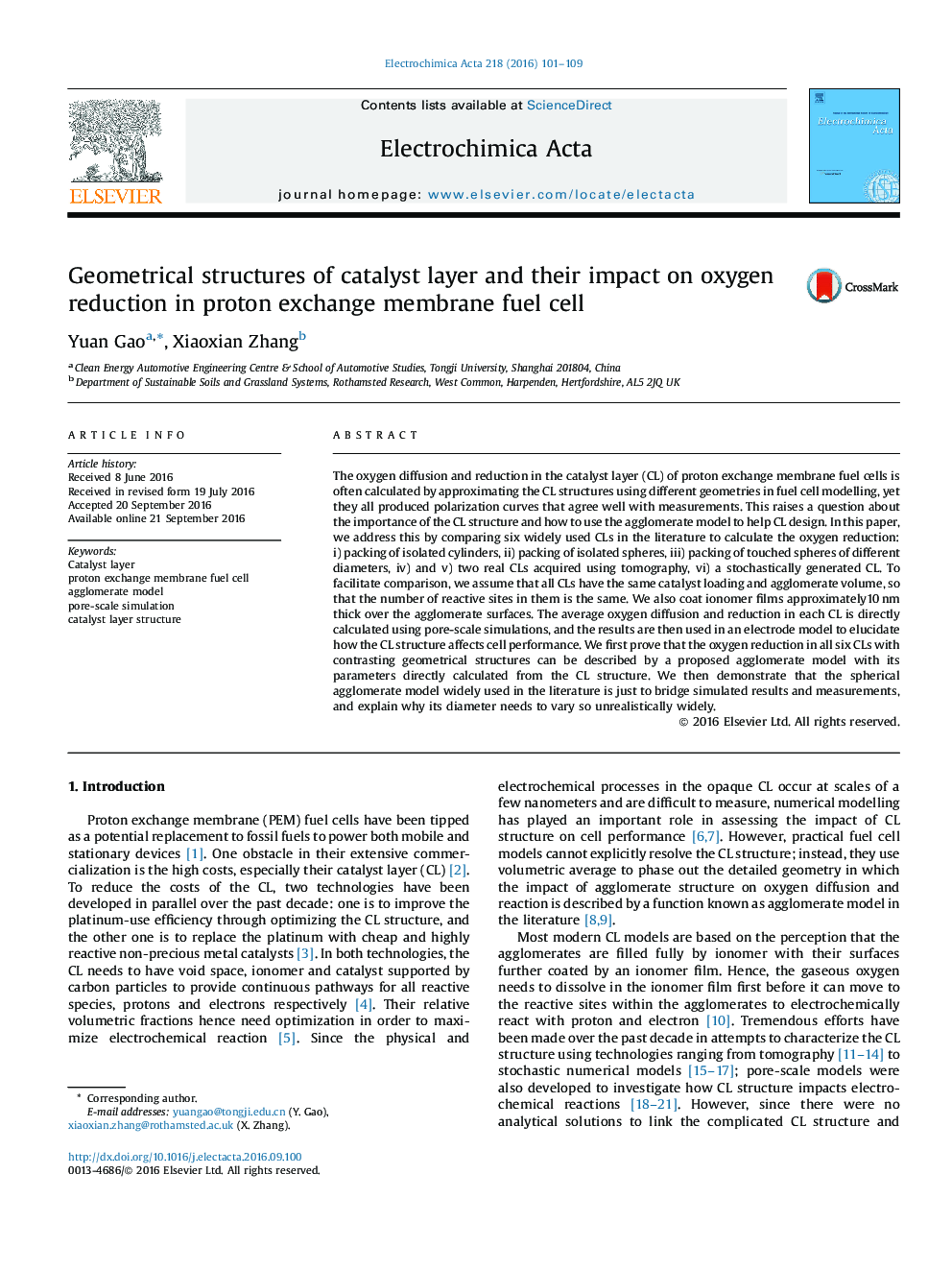| Article ID | Journal | Published Year | Pages | File Type |
|---|---|---|---|---|
| 4767648 | Electrochimica Acta | 2016 | 9 Pages |
Abstract
The oxygen diffusion and reduction in the catalyst layer (CL) of proton exchange membrane fuel cells is often calculated by approximating the CL structures using different geometries in fuel cell modelling, yet they all produced polarization curves that agree well with measurements. This raises a question about the importance of the CL structure and how to use the agglomerate model to help CL design. In this paper, we address this by comparing six widely used CLs in the literature to calculate the oxygen reduction: i) packing of isolated cylinders, ii) packing of isolated spheres, iii) packing of touched spheres of different diameters, iv) and v) two real CLs acquired using tomography, vi) a stochastically generated CL. To facilitate comparison, we assume that all CLs have the same catalyst loading and agglomerate volume, so that the number of reactive sites in them is the same. We also coat ionomer films approximately10Â nm thick over the agglomerate surfaces. The average oxygen diffusion and reduction in each CL is directly calculated using pore-scale simulations, and the results are then used in an electrode model to elucidate how the CL structure affects cell performance. We first prove that the oxygen reduction in all six CLs with contrasting geometrical structures can be described by a proposed agglomerate model with its parameters directly calculated from the CL structure. We then demonstrate that the spherical agglomerate model widely used in the literature is just to bridge simulated results and measurements, and explain why its diameter needs to vary so unrealistically widely.
Related Topics
Physical Sciences and Engineering
Chemical Engineering
Chemical Engineering (General)
Authors
Yuan Gao, Xiaoxian Zhang,
